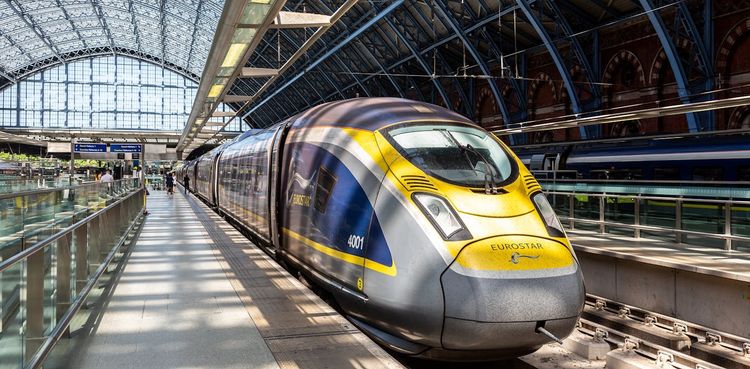Thirty years on from its first paying passengers, Eurostar now has a fresh chance to hit its potential

Thirty years ago, the inaugural Eurostar train filled with passengers departed from Waterloo station in London, heading to Paris. While numerous articles on November 14, 1994, highlighted the significance of this landmark trip, others pondered the implications of the tunnel for commerce and trade. Eurostar was anticipated to challenge the airline industry, while ferry operators were preparing for competition. Additionally, there were optimistic expectations for a surge in trade for the UK.

These forecasts were part of a longstanding tradition of envisioning a passage beneath the English Channel and its implications for both the United Kingdom and France. The earliest suggestion is said to have been presented to Napoleon Bonaparte in 1802, with the engineer advocating for the idea convinced that it could bring an end to the Napoleonic Wars.
Subsequent suggestions highlighted the volume of passengers using boat trains as proof of the potential earnings a tunnel could generate. Additionally, a government survey conducted in 1883 emphasized the advantages of transporting delicate or perishable items.
In 1919, a group of French students faced a question about the potential impacts of a Channel tunnel during their final exams before graduating. One student envisioned the tunnel's positive effects on trade and the economy, suggesting it might even lead to the elimination of tariffs between Britain and France.
In 1929, when the British government conducted a survey of hotel owners and travel agents, many anticipated that a tunnel would result in reduced tourism in Britain since vacationers would prefer to travel to Europe.
In 1986, UK Prime Minister Margaret Thatcher and French President François Mitterrand signed the Treaty of Canterbury, which set the stage for the construction of a tunnel. Many observers predicted that this development would mark the decline of air and ferry travel to Europe. They also anticipated the introduction of brief journeys that would enable commuters to travel easily between Kent and the Pas-de-Calais region for work.
A Eurotunnel tea towel promoted trains connecting various parts of Britain with cities like Copenhagen, Warsaw, Naples, and Madrid. Margaret Thatcher was particularly hopeful about the tunnel, believing it would strengthen the single market and provide economic advantages for Britain.
The Tunnel Has Arrived
However, a lot of the forecasts didn’t pan out as expected. During the first ten years of Eurostar’s service, the number of travelers hovered around six million each year. It wasn't until 2013 that it finally met its goal of attracting ten million passengers annually.
Between 2012 and 2019, Eurostar (the operator of the high-speed train service) and Eurotunnel (which manages the freight and vehicle shuttle between Folkestone and Calais) saw a steady flow of passengers, with numbers fluctuating between 20 and 21 million annually. However, this changed dramatically in 2021 when the total plunged to 5.8 million due to the dual effects of COVID-19 and the Brexit agreement. Then, in January 2023, Eurostar reported that its passenger levels were down by 30% compared to figures from before Brexit.
The number of passengers has rebounded, with nearly 19 million travelers using Eurostar in 2023. In light of the rising demand for eco-friendly travel, the company intends to expand its fleet by adding as many as 50 new trains. However, challenges may arise with the upcoming implementation of biometric checks for travelers entering the EU.
In reality, Eurostar's success has always been closely linked to political factors and its past.
Thatcher emphasized that funding for the tunnel's construction should come from private investors. Consequently, the companies working on the project had to recover their expenses, which amounted to £4.65 billion, roughly £12 billion in today's value. As a result, this led to increased fees for both passengers and cargo trains.
Concerns about the possibility of the tunnel being targeted by terrorists resulted in strict safety measures that complicated the operation of short commuter services. Although many believed that Eurostar would eliminate air travel between Britain and Europe, the deregulation of the airline industry led to fierce competition from budget airlines, which ultimately prevented the introduction of the anticipated long-distance night trains. Instead, the trains that were intended for the Nightstar service were sold off to Canadian railway companies.
Although November 14 marks the anniversary for paying passengers, it was on May 6, 1994, that the inaugural train journey took place between Britain and France, transporting Queen Elizabeth II to meet President Mitterrand.
In May of this year, French President Emmanuel Macron celebrated the milestone by sharing a message on X (previously known as Twitter): “Thirty years ago, the Channel Tunnel officially connected the UK and France! This achievement united people, boosted trade between us, and reinforced our political ties.” On the other hand, British Prime Minister Rishi Sunak chose not to comment on the occasion.
The United Kingdom has a new government that is committed to redefining its relationship with Europe. This intention was highlighted when Foreign Secretary David Lammy participated in the EU's foreign affairs council in October.
However, the government is grappling with the same challenges that plagued the previous administration, particularly the focus on small boat crossings and the future of the UK's relationship with Europe. This concern has become even more pressing as both parties evaluate what a potential next Trump presidency might mean for them in the United States.
The anniversary of the first paying customers using the Channel Tunnel presents an important chance to redefine relationships and for the UK to take charge on key matters related to trade and immigration. This shift will also affect Eurostar's financial situation.









































